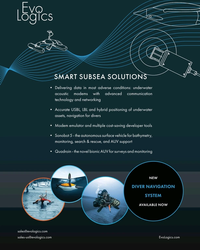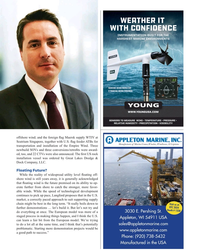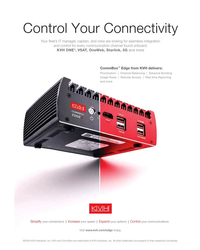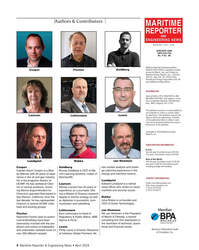Office Of Foreign Assets Control
-
- Money Laundering: Not Just for Drug Cartels Anymore Marine News, Jul 2015 #21
The dirty money can and does wash ashore on the waterfront.
Despite all the jokes about having a washing machine full of soapy hundred dollar bills, the U.S. Government takes money laundering very, very seriously. Anti-Money Laundering (AML) laws include substantial fines and possible prison time and places the onus for recognizing and reporting money laundering squarely on the shoulders of financial institutions. And yet, we don’t necessarily associate ‘dirty money’ with the mundane world of moving cargo or people from point ‘a’ to point ‘b.’ If so, that’s probably a mistake.
Money laundering, in its simplest form refers to financial transactions designed to hide the true source of money. Generally, the money involved is from an illegal or terrorist source. The end game is to take the “dirty money” and give the appearance of coming from a legitimate source. Tax evasion, health care fraud, drug trafficking, terrorism, and similar illegal activities are the usual well from which these funds are drawn. From the infamous, like Al Capone to the ruthless like Pablo Escobar, to the politically corrupt, money laundering and its consequent tax evasion has been around a long, long time.
Uncle Sam does not like to be cheated out of his tax revenue. The IRS sees to that. Indeed; money laundering is a method for evading taxes that carries high fines and penalties. In 2012, one bank was alone fined nearly two billion dollars for their part in aiding money laundering by Mexican Drug Cartels. Prior to the U.S. fine, the international arm of the same bank was fined over thirty million dollars for “operational deficiencies” in recognizing and reporting money laundering by its clients. Drop the ball and pay the penalty.
What are we doing to combat money laundering?
The U.S. Government has over the past few decades directly addressed the processes by which money from illegal sources is laundered ... with varying levels of success.
The Bank Secrecy Act of 1970 (BSA) or otherwise known as the Currency and Foreign Transaction Reporting Act requires U.S. financial institutions to assist U.S Government agencies to detect and prevent money laundering. It eliminates all anonymous banking in the United States. A financial institution is required to keep records of cash or negotiable instrument transactions in excess of $10,000.00 per day. If an institution is suspicious that money laundering may be occurring, they must both report it in a Suspicious Activity Report (SAR) and take active steps to stop it.
The reporting requirements are quite onerous. The U.S. Department of the Treasury has a bureau known as the Financial Crimes Enforcement Network (FinCEN) that collects and analyzes these reports to combat illegal financial transactions. Banks are required to file a Currency Transaction Report (CTR) within 15 days on all daily transactions which aggregate to $10,000.00 from one source.
The 1986 Money Laundering Control Act made money laundering a crime in and of itself. Beyond this, the 1994 Money Laundering Suppression Act requires banks to establish their own internal task force and plans to thwart suspicious activities.
The 2001 USA Patriot Act (Uniting and Strengthening America by Providing Appropriate Tools Required to Intercept and Obstruct Terrorism Act of 2001), Title III, strengthened banking rules. Internationally, it expanded bank record keeping and reporting requirements and increased the penalty for currency smuggling and counterfeiting.
The Treasury Department’s Office of Foreign Assets Control (OFAC) lists the names of sanctioned individuals, organizations and countries engaged in international narcotics trafficking, threats to national security, foreign policy or economy of the United States. Not surprisingly, U.S. banks are prohibited from dealing with those named on the list.
As has been proven out by recent headlines, no matter the strength and intent of the law, money laundering remains an international problem exacerbated by domestic and world affairs.
Money Laundering 101
The basic money laundering process has three steps: Placement, Layering and Integration:
Placement – Money from illegitimate sources is deposited into a bank in an attempt to legitimize the funds. Banks are required to report all transactions which total $10,000 per account per day. To avoid this red flag, money launderers may raise another red flag by “structuring” their deposits and/or withdrawals to total just under the $10,000 trigger. Structuring is illegal.
Layering – Using various financial transactions to hide the source of money is another tool of the trade. Moving funds from onshore to offshore or bank to bank, continual withdrawals and deposits, purchases of high-value items like cars, boats, jewels, and precious metals ae designed to change the “form” of money and again hide its source.
Integration – Legitimized money through one or more of the previous steps introduces the laundered money back into the mainstream economy. This may be from the sale of the high-value items, or capital “investments” in legitimate businesses or more insidiously, sponsoring terrorism.
On the Waterfront
You may be thinking that the marine industry is immune to creating illegal funds in need of washing, but you might be wrong:- Purchasing and chartering nondocumented vessels with illegal funds may be construed as money laundering;
- Increasing profit by subverting USCG regulations by under-manning may be money laundering;
- Failure to comply with load line requirements may be money laundering;
- Accepting capital or investment from illegal sources may be money laundering; and
- Attempting to deposit undeclared dinner or excursion boat revenue by structuring may be money laundering.
As no case is ever the same, determine your best practices regarding money laundering with your legal or bank compliance professional. Be conscientious and careful in your financial and tax related business dealings and reporting and finally, if you want to avoid money laundering completely, remember to take your wallet out of your pants pocket before you wash them.
The Author
Richard J. Paine, Sr. is the National Marine Sales Manager at Signature Financial LLC. He can be reached at [email protected].
(As published in the July 2015 edition of Marine News - http://magazines.marinelink.com/Magazines/MaritimeNews)
-
- Shipping Community Beware; Sanctions Scrutiny is Stepping up a Gear Maritime Reporter, Aug 2020 #56
Earlier this year, The U.S. Department of State, the U.S. Department of the Treasury’s Office of Foreign Assets Control (OFAC), and the U.S. Coast Guard issued a new advisory to provide those engaged or involved in trade in the maritime industry with further information and tools to counter illicit shipping
-
- Annual Economic Sanctions Update Maritime Reporter, Jun 2013 #18
News, Iran has continued to dominate U.S. sanctions headlines. Significant actions by both the U.S. Congress and Department of the Treasury’s Office of Foreign Assets Control (OFAC) over the past year have increased sanctions against Iran substantially, and further initiatives are pending. Our 2013 update concentrat
-
 )
March 2024 - Marine Technology Reporter page: 41
)
March 2024 - Marine Technology Reporter page: 41Image courtesy Outland Technology Image courtesy Exail Image courtesy Submaris and EvoLogics Vehicles The ROV-1500 from Outland Technology represents a leap forward in underwater robotics, a compact remotely operated vehicle (ROV) weighing in at less than 40 lbs (19kg) the ROV- 1500 is easy to transport
-
 )
March 2024 - Marine Technology Reporter page: 40
)
March 2024 - Marine Technology Reporter page: 40NEW TECH OCEANOLOGY INTERNATIONAL 2024 All photos courtesy MTR unless otherwise noted NEW TECH, PARTNERSHIPS LAUNCH IN LONDON With Oceanology International now one month in the rear-view mirror, MTR takes a look at some of the interesting technologies launched before, during and after the London event.
-
 )
March 2024 - Marine Technology Reporter page: 38
)
March 2024 - Marine Technology Reporter page: 38LANDER LAB #10 Photo courtesy West Mountain Radio Photo courtesy of Clarios/AutoBatteries.com Figure 6 The West Mountain Radio Computerized Battery Analyzer (CBA V) attaches to a Figure 5 laptop by a USB-B cable, and to a battery by Powerpole® Connectors. Exploded view of an AGM lead-acid battery.
-
 )
March 2024 - Marine Technology Reporter page: 36
)
March 2024 - Marine Technology Reporter page: 36LANDER LAB #10 Of special interest for marine applications, LiPo batteries are Shipping any kind of lithium battery can be a challenge, and offered in a “pouch” design, with a soft, ? at body. The pouch IATA regs vary with the batteries inside or outside an instru- is vacuum-sealed, with all voids ?
-
 )
March 2024 - Marine Technology Reporter page: 32
)
March 2024 - Marine Technology Reporter page: 32FEATURE SEABED MINING by a sea? oor plume from its pilot collection system test. pact, nodule collection system that utilizes mechanical and The Metals Company recently signed a binding MoU with hydraulic technology. Paci? c Metals Corporation of Japan for a feasibility study on The company’s SMD
-
 )
March 2024 - Marine Technology Reporter page: 30
)
March 2024 - Marine Technology Reporter page: 30FEATURE SEABED MINING bilical. It has passive heave compensation which nulli? es the necott. “The focus since then has been on scaling while en- wave, current and vessel motions that in? uence loads in the suring the lightest environmental impact,” says The Metals power umbilical. The LARS can
-
 )
March 2024 - Marine Technology Reporter page: 29
)
March 2024 - Marine Technology Reporter page: 29n January, Norway said “yes” to sea- bed mining, adding its weight to the momentum that is likely to override the calls for a moratorium by over 20 countries and companies such as I Google, BMW, Volvo and Samsung. Those against mining aim to protect the unique and largely unknown ecology of the sea?
-
 )
March 2024 - Marine Technology Reporter page: 25
)
March 2024 - Marine Technology Reporter page: 25Auerbach explained that ideally, “one ? ed layers of geothermal activity,” noted changes over an area of 8,000 km2. They would have both instruments: seismom- Skett, “and the change in salinity and dis- found up to seven km3 of displaced ma- eters to detect and locate subsurface ac- solved particles for
-
 )
March 2024 - Marine Technology Reporter page: 19
)
March 2024 - Marine Technology Reporter page: 19About the Author vey with the pipe tracker is not required, resulting in signi? - Svenn Magen Wigen is a Cathodic Protection and corrosion control cant cost savings, mainly related to vessel charter. expert having worked across The major advantage of using FiGS on any type of subsea engineering, design
-
 )
March 2024 - Marine Technology Reporter page: 18
)
March 2024 - Marine Technology Reporter page: 18TECH FEATURE IMR There are also weaknesses in terms of accuracy because of FiGS Operations and Bene? ts signal noise and the ability to detect small ? eld gradients. In Conventional approaches to evaluating cathodic protection this process there is a risk that possible issues like coating (CP)
-
 )
March 2024 - Marine Technology Reporter page: 16
)
March 2024 - Marine Technology Reporter page: 16TECH FEATURE IMR Image courtesy FORCE Technology OPTIMIZING CATHODIC PROTECTION SURVEY USING NON-CONTACT SENSORS By Svenn Magen Wigen, FORCE Technology he principle behind sacri? cial anodes, which are water structures, reducing the need for frequent repairs and used to safeguard underwater pipelines
-
 )
March 2024 - Marine Technology Reporter page: 15
)
March 2024 - Marine Technology Reporter page: 15sensor options for longer mission periods. About the Author For glider users working in ? sheries and conservation, Shea Quinn is the Product Line Manager the Sentinel can run several high-energy passive and active of the Slocum Glider at Teledyne Webb acoustic sensors, on-board processing, and imaging
-
 )
March 2024 - Marine Technology Reporter page: 14
)
March 2024 - Marine Technology Reporter page: 14TECH FEATURE TELEDYNE SLOCUM GLIDERS to hold over 3.5 times as many lithium primary batteries as the the water column and its thrusters give it the ability to stay standard Slocum Glider, and to physically accommodate up to on track in strong currents or other dif? cult ocean condi- 8 different sensor
-
 )
March 2024 - Marine Technology Reporter page: 9
)
March 2024 - Marine Technology Reporter page: 9from marinas along the western coast. The exact number of lizing laser detection systems can detect mines just below the mines, as well as their locations, remains largely a mystery, surface, even those hiding in murky water. The Airborne Laser although reports suggest that over three hundred have been
-
 )
March 2024 - Marine Technology Reporter page: 8
)
March 2024 - Marine Technology Reporter page: 8INSIGHTS SUBSEA DEFENSE Copyright RomanenkoAlexey/AdobeStock WHEN THE SHOOTING STOPS: BLACK SEA MINE CLEARANCE WILL FEATURE ADVANCED TECH, CONOPS By David Strachan, Senior Analyst, Strikepod Systems ince the beginning of the war in Ukraine, mine warfare mines have been the weapon of choice for both
-
 )
March 2024 - Marine Technology Reporter page: 6
)
March 2024 - Marine Technology Reporter page: 6MTR Editorial Advisors Gallaudet Hardy The Honorable Tim Gallaudet, Kevin Hardy is President PhD, Rear Admiral, U.S. of Global Ocean Design, Navy (ret) is the CEO of creating components and Ocean STL Consulting and subsystems for unmanned host of The American Blue vehicles, following a career
-
 )
March 2024 - Marine Technology Reporter page: 2nd Cover
)
March 2024 - Marine Technology Reporter page: 2nd CoverSMART SUBSEA SOLUTIONS • Delivering data in most adverse conditions: underwater acoustic modems with advanced communication technology and networking • Accurate USBL, LBL and hybrid positioning of underwater assets, navigation for divers • Modem emulator and multiple cost-saving developer tools • Sonobot
-
 )
April 2024 - Maritime Reporter and Engineering News page: 32
)
April 2024 - Maritime Reporter and Engineering News page: 32FEATURE A closeup of a blade installation process taken via drone. A blade handling system is apparent (in yellow). Images courtesy of Mammoet requirement for the development of these cranes, particularly ling area. This would result in a major time and fuel saving. in ? oating offshore wind,” says
-
 )
April 2024 - Maritime Reporter and Engineering News page: 25
)
April 2024 - Maritime Reporter and Engineering News page: 25RADM PHILIP SOBECK, MILITARY SEALIFT COMMAND Photo by Brian Suriani USN Military Sealift Command From a global supply chain perspective, What makes MSC so vital to the we’ve learned a lot about dealing with Navy’s ? eet and our military disruptions. COVID delivered a big forces around the world? wake-up
-
 )
April 2024 - Maritime Reporter and Engineering News page: 23
)
April 2024 - Maritime Reporter and Engineering News page: 23offshore wind; and the foreign ? ag Maersk supply WTIV at Seatrium Singapore, together with U.S. ? ag feeder ATBs for transportation and installation of the Empire Wind. Three newbuild SOVs and three conversions/retro? ts were award- ed, too, and 22 CTVs were also announced. The ? rst US rock installa
-
 )
April 2024 - Maritime Reporter and Engineering News page: 15
)
April 2024 - Maritime Reporter and Engineering News page: 15hydro-acoustic design of a propulsor that delays cavitation meets its underwater noise limits. This will require specialized inception and cavitating area. The third approach should be test sites or specialized mobile underwater testing equipment. isolation mounting of a vibro-active equipment and
-
 )
April 2024 - Maritime Reporter and Engineering News page: 14
)
April 2024 - Maritime Reporter and Engineering News page: 14Book Review Approach to Meeting Underwater Radiated Noise Limits Def ned By Raymond Fischer uantitative underwater radiated noise limits will construction inspections, 5) possible training with respect to be developed shortly by IMO, and/or countries salient design/construction essentials, 6) compliance
-
 )
April 2024 - Maritime Reporter and Engineering News page: 5
)
April 2024 - Maritime Reporter and Engineering News page: 5Control Your Connectivity Your ?eet’s IT manager, captain, and crew are looking for seamless integration and control for every communication channel found onboard: ® KVH ONE , VSAT, OneWeb, Starlink, 5G and more ™ CommBox Edge from KVH delivers: Prioritization | Channel Balancing | Advance Bonding
-
 )
April 2024 - Maritime Reporter and Engineering News page: 4
)
April 2024 - Maritime Reporter and Engineering News page: 4Authors & Contributors MARITIME REPORTER AND ENGINEERING NEWS M A R I N E L I N K . C O M ISSN-0025-3448 USPS-016-750 No. 4 Vol. 86 Maritime Reporter/Engineering News (ISSN # 0025-3448) is published monthly Cooper Fischer Goldberg except for March, July, and October by Maritime Activity Reports, Inc.
